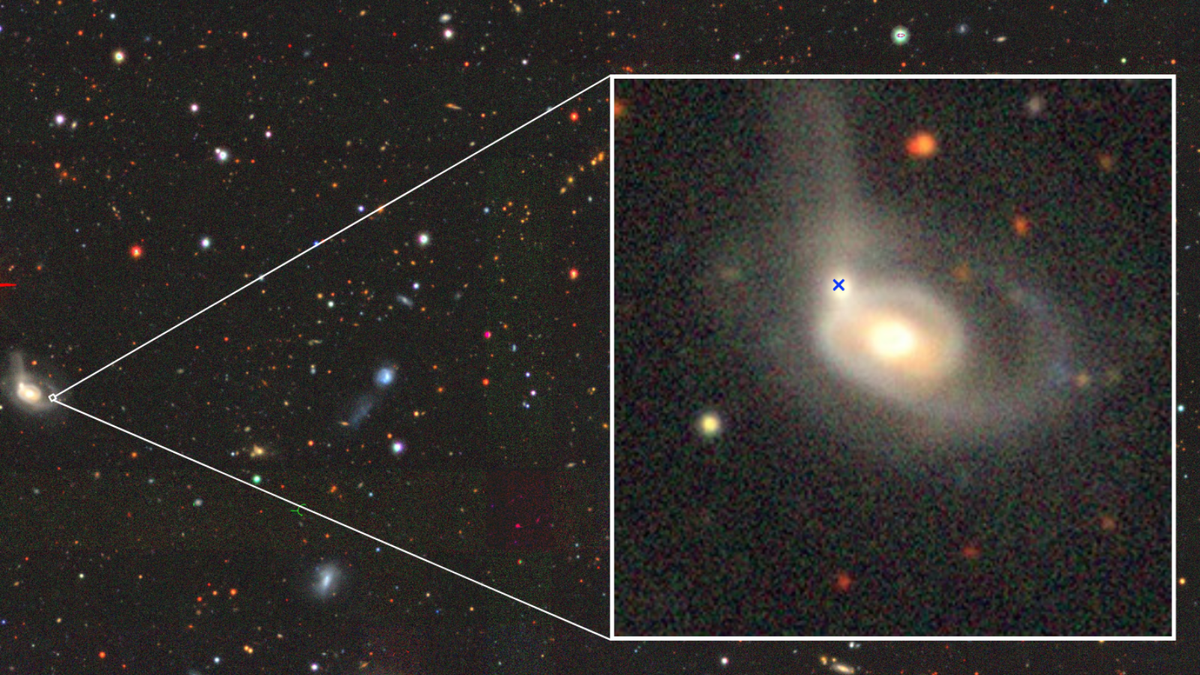Now Reading: Astronomers Spot Black Hole Tearing Star Apart Amid Galactic Collision
-
01
Astronomers Spot Black Hole Tearing Star Apart Amid Galactic Collision
Astronomers Spot Black Hole Tearing Star Apart Amid Galactic Collision

Quick Summary
- Event: Astronomers investigated a rare and violent cosmic event where a star was ripped apart by the immense gravity of a supermassive black hole. This is known as a “tidal disruption event” (TDE).
- Designation of TDE: The event, labeled AT 2022wtn, occurred in the smaller galaxy (SDSSJ232323.79+104107.7) within a merging galactic pair 700 million light-years away.
- Details:
– The involved black hole has approximately 1 million solar masses and consumed a low-mass star.
– This particular TDE exhibited unusual features including an extended brightness plateau lasting about 30 days,sharp temperature drops,and unique emission lines in its spectrum.
- Galactic Interaction: The host galaxy is part of early-stage merging with another system that’s ten times larger-a stage theorized to favor such events but rarely observed.
- Processes Identified:
– Stellar destruction included “spaghettification,” where tidal forces stretched and compressed the star before forming an accretion disk around the black hole.
– Powerful outflows or jets expelled much of the stellar matter forming an expanding gas bubble alongside radiant radio emissions.
Images from Legacy Surveys depict both galaxies interacting and also visualizations of the event dynamics.
Indian Opinion Analysis
The occurrence of AT 2022wtn offers insights into astrophysical phenomena with profound implications for understanding cosmic evolution. Studying tidal disruption events like this can enhance our knowledge regarding processes shaping galaxies during mergers-a phenomenon believed to be pivotal in driving transformations over billions of years.
India’s scientific community could benefit from these findings to supplement similar research undertaken through domestic initiatives like ASTROSAT missions. Such events may also inspire collaborative international efforts toward deeper exploration using multi-wavelength studies, integrating data across radio, infrared, X-ray spectra.
Additionally, exploring such galactic violence emphasizes our relative cosmic insignificance while reinforcing human curiosity about universal mechanics-values at core to India’s growing space ambitions under ISRO’s leadership in science-driven diplomacy.
While India currently focuses on practical satellite technologies addressing societal challenges like climate monitoring or communications expansion, long-term investments targeting theoretical cosmology might strengthen India’s broader contributions to humanity’s quest for understanding deep-space mysteries.

























